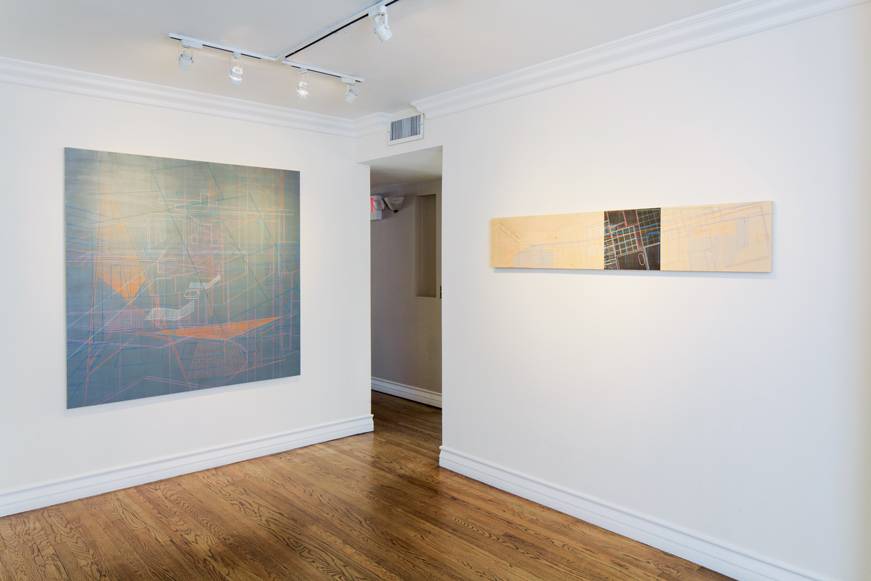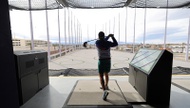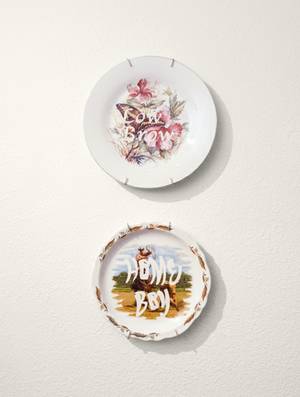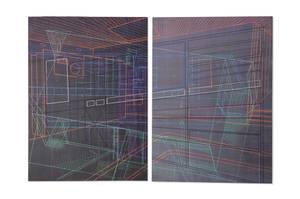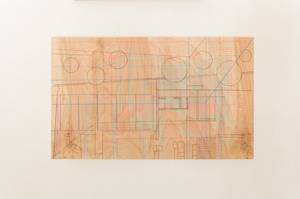
Shawn Hummel and Elicia Aslin-Hummel: Paintings and Ceramics Through January 31, by appointment. MCQ Fine Art Advisory, 620 S. 7th St., 702-366-9339.
A “midcentury modernism” vibe pulses in the Paintings and Ceramics exhibition at Michele C. Quinn Fine Art. It’s more than a ’50s palette of paprika and pumpkin, sea foam and sunflower colors. More than organic shapes and sharp contours. It’s in the show’s feeling—a kind of classy optimism that goes hand-in-hand with “mid-mod,” a design movement associated with clean lines and simplified forms. The two artists—Shawn Hummel in painting and Elicia Aslin-Hummel in ceramics—share a similar concern: How do you translate historic midcentury motifs into contemporary art?
Hummel approaches the problem through architectural transformation. His paintings are sourced in architectural studies by luminaries of midcentury design, such as Eames, Frey, Saarinen and Loewy. The principle is collage. The artist selects details from building projects and layers them in a process that approximates the mind-bending moves of Op Art. The complexity of the picture planes is partly obtained through multiple perspectives, partly through the Prismacolor palette, and partly through the dynamism in the architectural plans themselves. The result is an aggregate of geometric purity. In the masterful “Rapson, Smith, Knorr/Eliot,” the push-pull of perspectives and color recalls M.C. Escher on the one hand, Mondrian on the other.
Linear structure is also prominent in Aslin-Hummel’s ceramic vessels. The wrapped and molded forms feature attenuated contours that owe more to sculpture than to potting. With their white glazing and simplified, often flattened, structure, these polished works have nothing whatsoever to do with the lumpy earthiness often associated with the ceramic medium. In the most impactful works, Aslin-Hummel reinforces structural purity with a single black or gray line. Other vessels sport stencil-cut ceramic decals, often in vibrant biomorphic shapes. A third group is decorated with vintage decals trimmed and collaged into homey, retro designs.
Although not an explicitly collaborative show, the works in Paintings and Ceramics are clearly in dialogue. Hummel and Aslin-Hummel make their most convincing aesthetic statements when they maintain purity and tone down ornament. Hummel’s paintings on birch plywood panels are an interesting exploration of his linear technique, but compromise pictorial elegance with busy wood-grain. The ceramics topped with kitschy decals register primarily as amusing design, achieving a pleasant surface rather than a significant form. Those criticisms, however, should be put in the perspective of a strong show that successfully translates markers from a popular period in design history into contemporary art.
